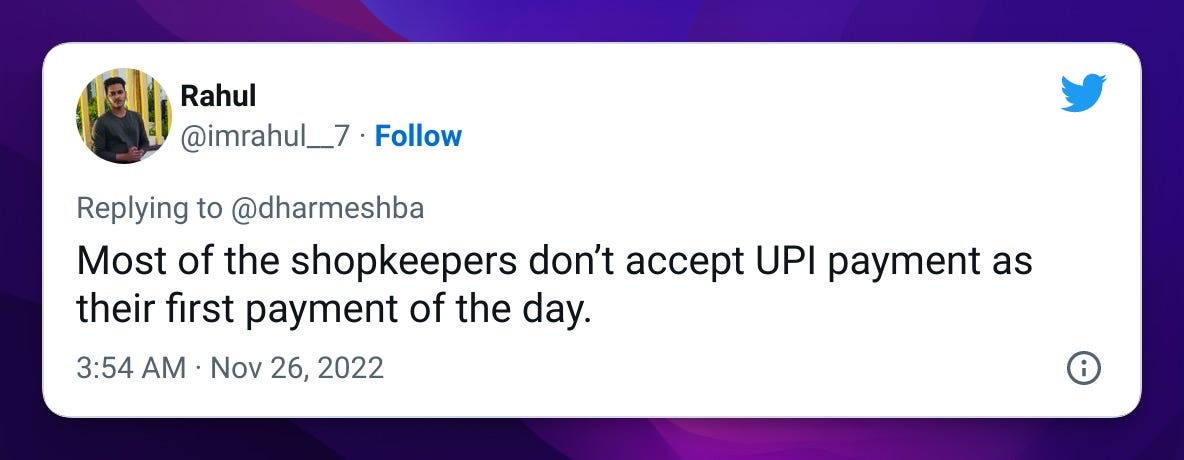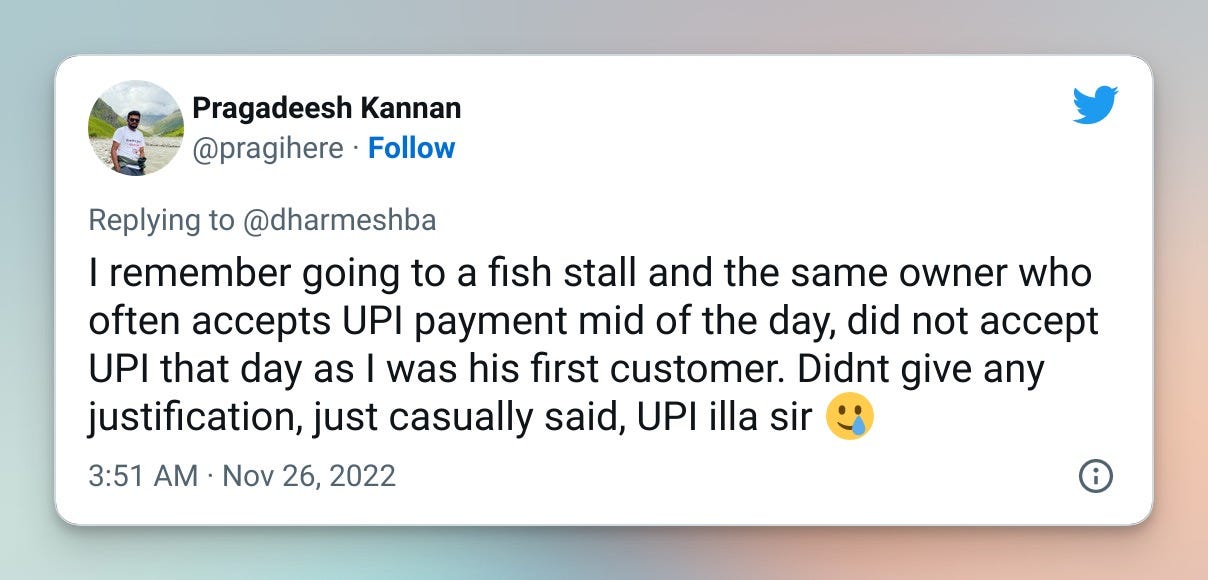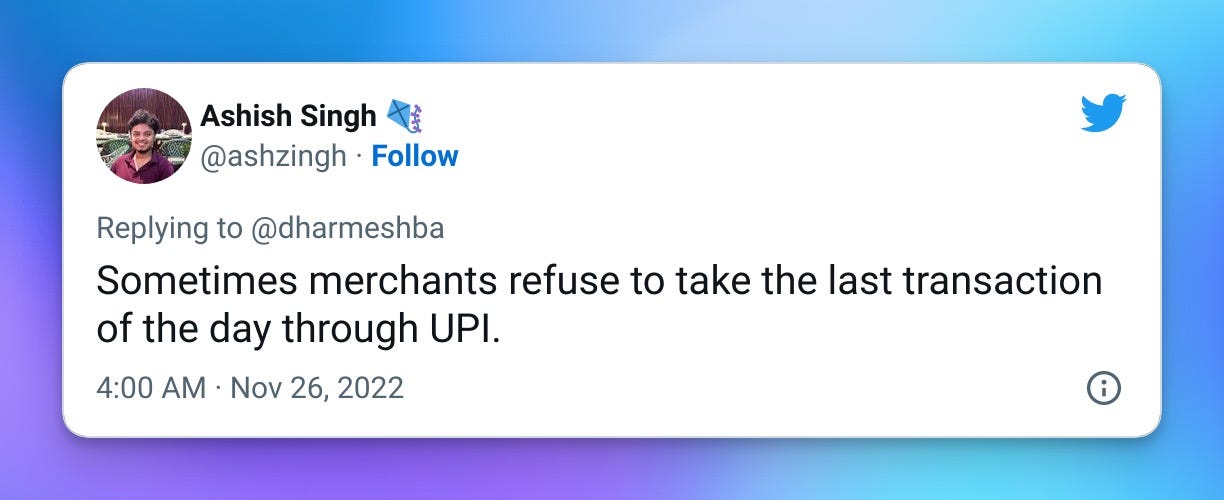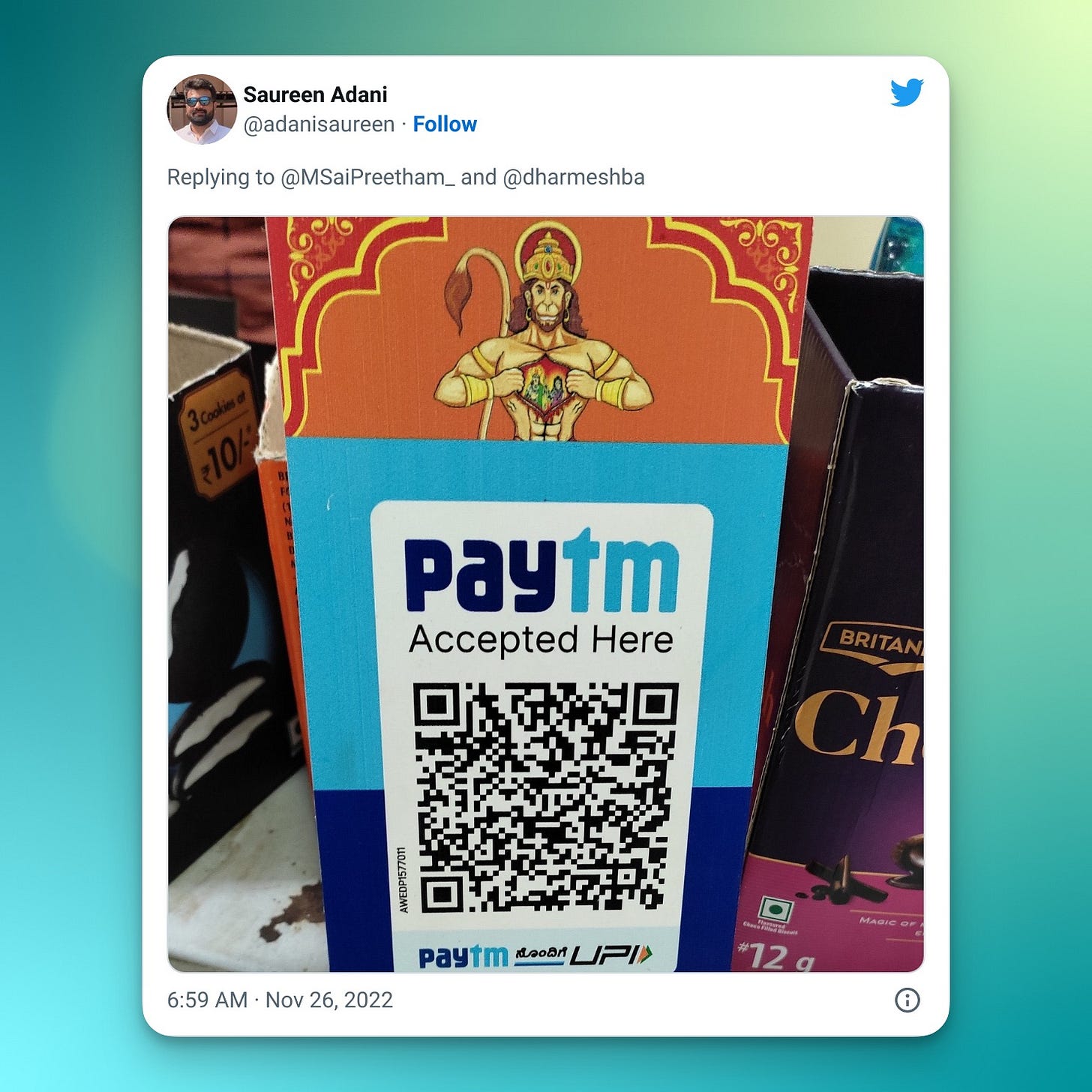Bohni, small merchants and UPI
Designing Digital Products with a Cultural Perspective:
Hello builders 👋, I hope you are all gearing up for the holiday season. I’m prepping myself for a field study in Jan 2023. I have some exciting field research coming up to document the financial journeys of farmers across the country. Follow me on Twitter for more updates :)
In this edition, I wanted to discuss a topic close to my heart. Designing digital products with a cultural perspective. India indeed has a highly heterogeneous culture, with different languages, rituals, and food found across the country. This is due to its long history of invasions, migrations, and cultural exchanges, which have resulted in significant variations in its cultural practices. As a result, it is essential for digital product designers to take into account these cultural nuances when designing for Indian users.
Today I shall discuss the ritual of Bohni.
What is Bohni?
In many cultures, the first sale of the day is considered auspicious, and it is believed that it can influence the merchant's luck for the rest of the day. This belief is often called the Bohni custom in India and Pakistan and continues to be practised in many retail establishments even today. The first sale of the day is made in the name of God. The cash from the first transaction is touched upon by the Gods photograph and the cash register box with the hope that the rest of the day is filled with good luck. It is also good manners for customers not to bargain or ask for discounts in a bohni sale.
Different businesses have their customs to follow during the first sale. For example, in Bangalore, a restaurant might refuse to serve a single idly or a half plate of rice bath (pulav) in a bohni. My dad runs a pooja store in my hometown that sells products for Hindu rituals. He refuses to sell oil or camphor as the day's first and last sale. He believes that the first sale should not enable destruction (like in camphor) but bring prosperity to the customer’s life. Bohni as a ritual is deeply ingrained in the culture.
I always wondered, in the age of UPI, what would be the equivalent of Bohni?
A few weeks back, I tweeted about Bohni, and the replies were surprising.
Looks like a few shopkeepers don’t accept UPI as their first payment and demand cash.
And few even demand cash for the last transaction of the day.
As digital product designers, how do we incorporate the ritual of bohni into our products? In India, business and traditions go hand in hand as they provide hope in the uncertain entrepreneurship journey.
In Jun 2022, PAYTM launched photo QR, a personalised QR code that allows merchants to add a photograph of their choice onto the QR. Though the app will enable merchants to add pictures, I have observed many merchants in my surroundings choose a God photograph.
Taking a cue from the behaviour, what if a photograph of Lakhsmi, the goddess of wealth, accompanies the first UPI sale of the merchant? The merchants should be able to customise the option for their preferred images based on their belief systems.
With the rising QR code wars to capture storefronts, designing with an understanding of cultural nuances would be a competitive edge. I hope we conduct more user research activities to understand how merchants want to incorporate their faith in the technology and design accordingly.
What are some of the cultural rituals that you think need to be incorporated into digital products? Do leave a comment below.










Great piece!
I'm on a spree of reading articles on payments in India for a design interview assignment.
The idea of incorporating a god/goddess' picture on receiving bohni on a UPI payment is great work around. However, I was wondering how:
- the tactility of offering cash to a mandir in the house/ business could be replaced (I don't think it can be)
- the attachment to a particular image/ form/ idol that they're used to seeing could be incorporated (adding a photo they want to?)
- the experience of that mandir: fragrance of an agarbatti, lighting a diya, offering flowers and then physically being able to touch the idol (or customs of other religions) could be incorporated.
A digital space being able to replicate everything in the physical world seem nearly impossible to me. And yes, such minor additions like in the last image are definitely a step ahead! :)